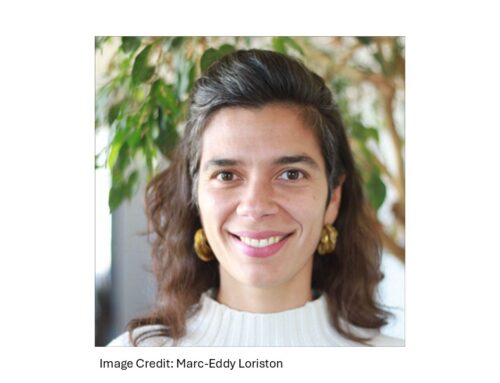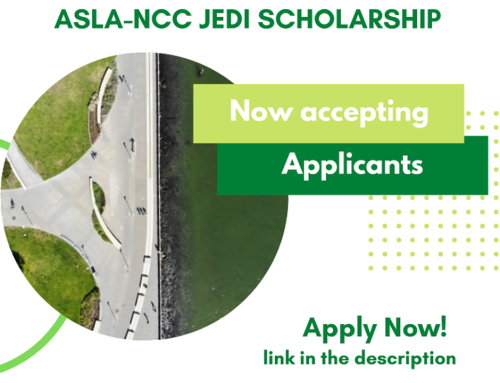by Nate Berg
On the corner of 9th Avenue and Little West 12th Street in Manhattan, a large hexagonal steel planter holds a burst of succulents, ferns, and grasses. Hidden beneath its 2,000 pounds worth of soil and plants are specially designed wheels that allow the planter to do something magical. At a specific time each day, this planter and others like it are rolled out into the street, blocking traffic.
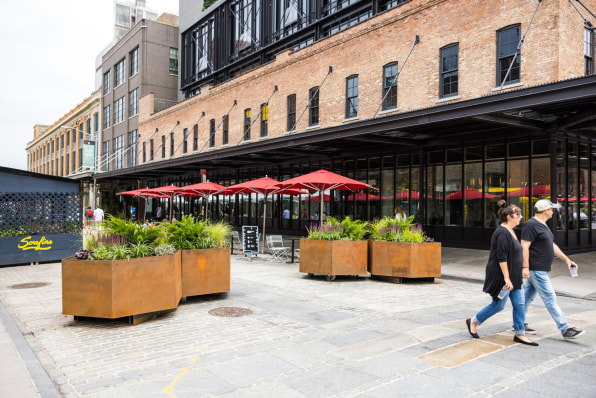
In cities around the world, streets have been temporarily blocked from their typical uses, with pedestrians, shoppers, and diners all spilling out into newly opened urban space. Alternative transportation advocates and urbanists have been calling for this type of intervention for years. During the pandemic, a time when many of the accepted patterns of city living have been jostled or even upended, neighborhoods and communities around the world are beginning to consider the possibility of not going back to the way things were. Temporary street closures from New York to San Francisco are on the verge of becoming permanent urban fixtures. 2022 could be the year.
In the Meatpacking District, the planters and the street closures they enable are the work of the Meatpacking Business Improvement District, a property-owner funded nonprofit focused on making the area attractive to businesses and their customers. Jeffrey LeFrancois is the BID’s executive director, and he has been working to help the neighborhood’s boutiques and restaurants persevere through the pandemic. Part of his effort has centered on making it safe and appealing to use the outdoor space for commerce. LeFrancois calls this a Pedestrian Oriented District, and the new planters, designed by the landscape architecture firm Ken Smith Workshop, are a big physical mechanism to make that happen. “My goal was to really plant a flag in the ground,” LeFrancois says.
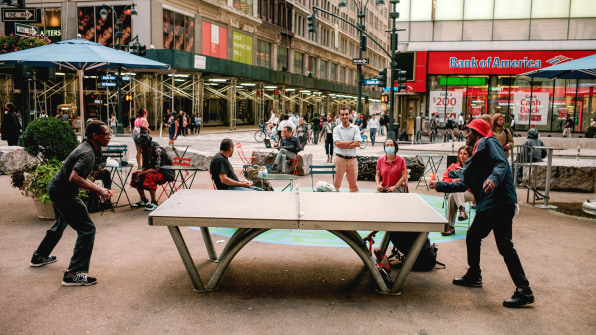
Since the beginning of August, weekly neighborhood visitation has been above 200,000 visitors per week, about a 15% to 30% increase in visitors compared to before the planters were put in place, according to LeFrancois. One business reported a 140% increase in sales after the streets were closed. The Meatpacking District’s experience is an argument that, counter to the suspicions of many businesses in cities around the world, cutting off car traffic is not bad for business.
“At the end of the day, I run a BID, so it’s about economic development for me,” LeFrancois says. “If I can make the outside a really great place to do business, then it’s going to be a really great place to support those businesses.”
As the pandemic set in, Transportation Alternatives was a vocal advocate for opening streets up to people. This led the city to establish an Open Streets program. Within months, the program’s initial 1.6 miles of vehicle-limited streets turned into a goal of making 100 miles worth of open streets across the city, including both play streets dedicated to neighborhood use and commercial streets where restaurants and businesses could serve customers outdoors. Harris says that goal has fallen short, but that there are still 126 active Open Streets in the city, making up about 24 miles.
Harris says the city can do better. “A hundred miles is a lot of space,” he says. “But if the city’s going to make that announcement and this is going to be critical space to address the challenges that are emanating from COVID, then cities actually have to do it.”
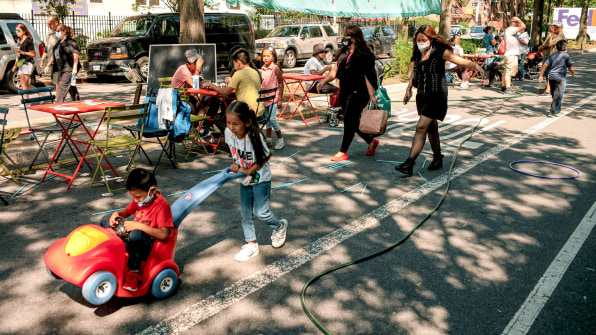
He argues that part of achieving these kinds of goals is putting more resources behind them. Harris says that while some of New York’s Open Streets have been thriving successes, like the 34th Avenue Open Street, many others have lacked the volunteer strength to turn a street closure into a community amenity.
“The community can and should have a major voice in this,” Harris says, but it shouldn’t be a project where the city hands over the street and then walks away. “It’s been wonderful to see what’s happened organically, but these need to be real projects with resources and capital improvements.”
The city has made some steps toward a more formal approach. In November, the city planning commission voted unanimously to amend the zoning code to allow the outdoor dining that flourished during the pandemic to remain permanent, claiming part of streets that would otherwise hold parking or traffic.
New York is hardly alone in this ambition. Cities like Paris and Barcelona have made big moves during the pandemic to rededicate street space to non-vehicular users. In the U.S., cities like Seattle and Chicago have given over car space to people and outdoor dining.
Whether these efforts will outlast the pandemic is still up in the air, but in San Francisco, a citizen-led effort to keep one street closed is getting closer to succeeding. Winding through the city’s large Golden Gate Park, John F. Kennedy Drive was converted into a 1.5 mile car-free street, and local activists have been calling for this temporary change to become permanent. Groups like Car Free JFK have argued that the road, running the length of the park, was being misused before the pandemic as free on-street parking and its closure to traffic has added more recreational value to the park.
The San Francisco Recreation and Park Department and the city’s Municipal Transportation Agency just ended a two-month public comment period on the proposed closure. The de Young Museum, a fine art museum in the park, issued a statement calling for JFK Drive to remain open, citing concerns that people with limited mobility would be prevented from visiting the museum. “While it is great for those who can walk or bike to the de Young, it negatively impacts a significant group of our local community, including people with disabilities, those with ADA placards, the elderly, families with infants and young children, and others,” the museum stated.
Activists and urban planners have called this standpoint “wholly incorrect,” and noted that closing the surface street would not prevent people from accessing the museum through its 800-car underground garage.
Support for the car-free plan has been building in the city for decades. Beginning in 1967, the city banned car traffic on JFK Drive on Sundays. A 2000 ballot initiative called for that closure to be extended to Saturdays as well. That initiative failed, but the city eventually added Saturday closures for a handful of summer weekends. The pandemic pushed those closures to the entire week, and if advocates have their way, the road may never fully reopen to vehicular traffic. The proposal will next head to the Board of Supervisors for a vote, and implementation could happen next spring.
But just because the idea doesn’t work everywhere doesn’t mean it can’t work in some places. The movements gathering steam in New York and San Francisco show that in the right locations and with the right conditions, making a street car-free can give back more than it takes away. 2022 may be the year these projects begin to transition from a pandemic novelty to a permanent part of city life. READ the article on Fast Company


